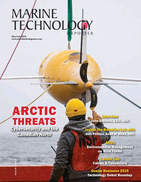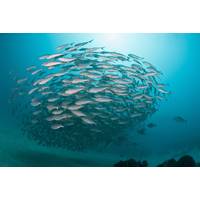
“Revive Our Ocean” Initiative Launched
A new initiative was launched on Thursday to help communities profit from efforts to protect at least 30% of the world's oceans by the end of the decade.The initiative, dubbed Revive Our Ocean, is led by the NGO Dynamic Planet together with the National Geographic Society's Pristine Seas program and will assist local communities in their efforts to establish "marine protected areas" in coastal waters.It will focus initially on tackling overfishing and ocean climate impacts in Britain, Portugal, Greece, Turkey, Mexico, the Philippines and Indonesia."The worst enemy of fishing is
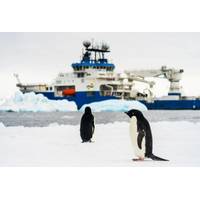
Schmidt Ocean Institute Successfully Concludes Inaugural Antarctic Expedition
Earth’s climate systems, absorbing an estimated 40% of anthropogenic carbon emissions and nearly 75% of excess heat in the atmosphere yearly.The inaugural expedition to Antarctica called “Into the Southern Ocean” was a collaboration between the Schmidt Ocean Institute and the National Geographic Society. As part of the Society’s Perpetual Planet Ocean Expeditions supported by Rolex’s Perpetual Planet Initiative, a multidisciplinary cohort of National Geographic Explorers conducted a comprehensive scientific examination – from sea ice to the seafloor – of this critically

Schmidt Ocean Institute, National Geographic Society Partner on Diversity
Schmidt Ocean Institute and the National Geographic Society announced a program to advance diversity and equity among ocean scientists. The partnership is intending to provide seagoing opportunities to underrepresented, historically marginalized and local scientists and National Geographic Explorers.The collaboration aims to strengthen project leadership, encourage career development, and amplify diverse perspectives in ocean-related work. This partnership aligns with both organizations’ commitments to provide equitable access to resources and career opportunities. Both Schmidt Ocean Institute

MTR100: #3 Sven Lindblad, Lindblad Expeditions
asset and avoid destructive intrusion. A surfer doesn’t want to go to Bali and surf through plastic bags.”Lindblad is a member of the General Assembly of the Charles Darwin Foundation for the Galapagos Islands; serves on the Board of The Safina Center, on The Hubbard Council of the National Geographic Society, and on the Board of Trustees of RARE; was named commissioner of the Aspen Institute’s Commission on Arctic Climate Change in 2008, is a founding Ocean Elder of the non-profit organization, Ocean Elders, which brings together global leaders to pursue the protection of the ocean&rsquo
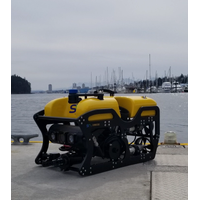
SEAMOR: ROV to Last Ice Project in Canada
and be largely ice-free by 2070. “The Last Ice Project” is a collaboration between the Department of Fisheries and Oceans Canada (DFO), Parks Canada Agency (PCA) and Indigenous, Northern and International partners (including the World Wildlife Fund-Canada and Pristine Seas – National Geographic Society).SEAMOR Marine's Chinook ROV has been selected for this mission given its earned reputation as a versatile vehicle that easily pairs with a variety of accessories. This particular model will be equipped with a handheld pendant controller, and a fiber optic tether multiplexer upgrade

MTR’s “Top 10” Ocean Influencers
explorer known for her research on marine algae, Dr. Sylvia Earle has lived by her mantra, “no blue, no green.” She has spent her lifetime protecting and conserving the world’s oceans.Sylvia Earle is President and Chairman of Mission Blue/The Sylvia Earle Alliance. She is a National Geographic Society Explorer in Residence, and is called Her Deepness by the New Yorker and the New York Times, Living Legend by the Library of Congress, and first Hero for the Planet by Time Magazine. She is an oceanographer, explorer, author and lecturer with experience as a field research scientist, government
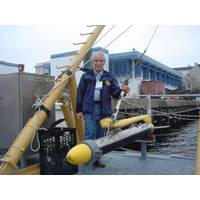
Klein's Side Scan Sonar, Then and Now
from the beginning. What kind of projects was [Edgerton] working on at the time? MK: Edgerton was famous for the development of strobe light – he’s known as “Papa Flash” – but back in the late ’50s he was introduced to Jacques Cousteau by the National Geographic Society. Cousteau wanted to take pictures in the deepest part of the ocean. Edgerton wound up making him a deepwater camera and strobe light, and together they took the first pictures in the deep ocean. Edgerton’s device used a precision timed pinger that helped him to get these first deepwater
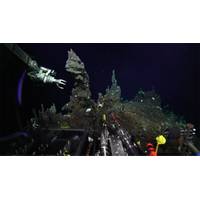
Scientists Find Life at Unexplored Ocean Depths
will continue to analyze the data and samples collected during this expedition to advance research on how life thrives on these extreme deep-sea hydrothermal vents. This research was supported by the NOAA Ocean Exploration and Research Program, the NOAA Pacific Islands Regional Office, the National Geographic Society and the Schmidt Ocean Institute.
Scientists Produce Data from Largest Single Volcano
Chiba University, will now return home to process and analyze the data that were collected. All data obtained during the expedition are made publicly available by Schmidt Ocean Institute. Support for this expedition was provided by Schmidt Ocean Institute, National Science Foundation (NSF), National Geographic Society Committee for Research and Exploration, and Texas State Aquarium. Schmidt Ocean Institute provides ship time aboard R/V Falkor and the equipment required at no cost.
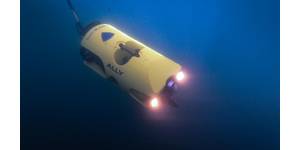
 February 2025
February 2025


